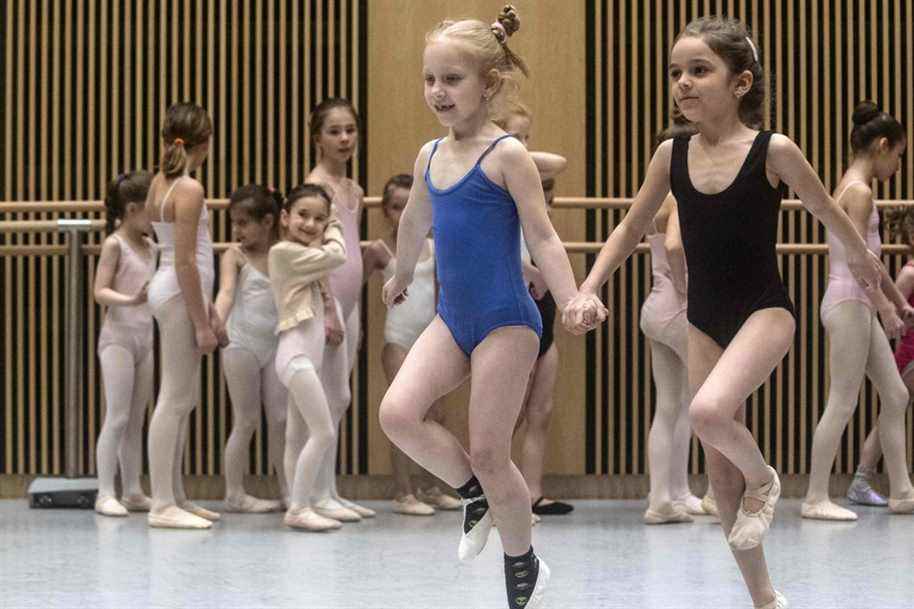(Prague) Six-year-old Eva stretches her body back with ease and her satisfied smile is reflected in the large mirror of the dance studio, as other Ukrainian children look on admiringly as they try to imitate her.
Posted at 8:47 p.m.
They are all attending a free ballet class for young Ukrainian refugees, opened by the National Theater in Prague at the end of March, a month after Russia began to invade Ukraine.
Two dozen Ukrainian children present in the room, including a boy, try to duplicate Eva’s graceful gestures, but some end up sitting down to observe.
“My daughter and I went to see the Sleeping Beauty ballet at the National Opera. […] We jumped at the chance! said Yulia Petronchak, Eva’s mother.
This university professor and her daughter left the city of Lviv, in western Ukraine, for Prague on the first day of the invasion, in order to escape the “constant aerial alerts”, while the father d’Eva remained in his country.
More than 4.5 million refugees have left Ukraine since the invasion began on February 24, and around 300,000 have landed in the Czech Republic.
Like many children taking part in the course, Eva is not a beginner: before leaving, she attended the choreographic school in Lviv for six months.
“The cradle of classical dance”
“I have already spotted some talent,” says Jana Jodasova, 59, a former National Theater dancer with two decades of career behind her and now teaching classical dance.
At the beginning of class, she helps dancers choose leotards and ballet shoes. The parents of the Czech children who attend her regular classes donated three whole bags.
Meanwhile, the little Ukrainian ballerinas already dressed practice pirouettes alone or test the firmness of the bars of the dance studio.
The idea for the courses came to M.me Jodasova shortly after the start of the Russian invasion, while watching “the horrors” of war on television.
“Russia and Ukraine are the birthplace of classical dance, most children there take ballet lessons at least for a while,” she explains. “Ballet is one of the things they can’t live without.”
Moments later, she faces a crowd of about 100 mothers with their children queuing outside the building to register for the free course.
“Arms and Legs”
This new role forced Mme Jodasova to unearth her forgotten knowledge of Russian, a language imposed on Czechs and other nations under communist rule in Moscow until 1989.
“I communicate with children using my arms and legs and very poor Russian. But I feel like we can understand each other,” she says.
When she has difficulties, she turns to Alisa Kolesnikova, eight years old, born to Russian parents in Prague and who follows a regular course with the children of the neighborhood.
Alisa, who has been attending ballet school for three years and wants to become a ballerina, welcomes the opportunity to guide the little refugees in their exercises.
“I really like showing things to children, especially beginners,” explains the red-haired, blue-eyed dancer.
Hope to return to Ukraine
Five-year-old Vasilisa Malakutska, one of the youngest to attend the free class, is no beginner either. “I first took her to a ballet class when she was four and she didn’t take it very well, but I think now is the right time,” says her mother Ekaterina Malakutska, a marketing expert from Kyiv.
She is considering a career as a dancer for her daughter, just like the mother of little Eva. “Either a ballerina or a doctor”, specifies Mme Petronchak adding that while Eva is happy during Prague, her future remains in Ukraine.
“The safety of the child is essential. But if there are no (anti-aircraft) alerts in Western Ukraine […] we hope to get home as soon as possible.
